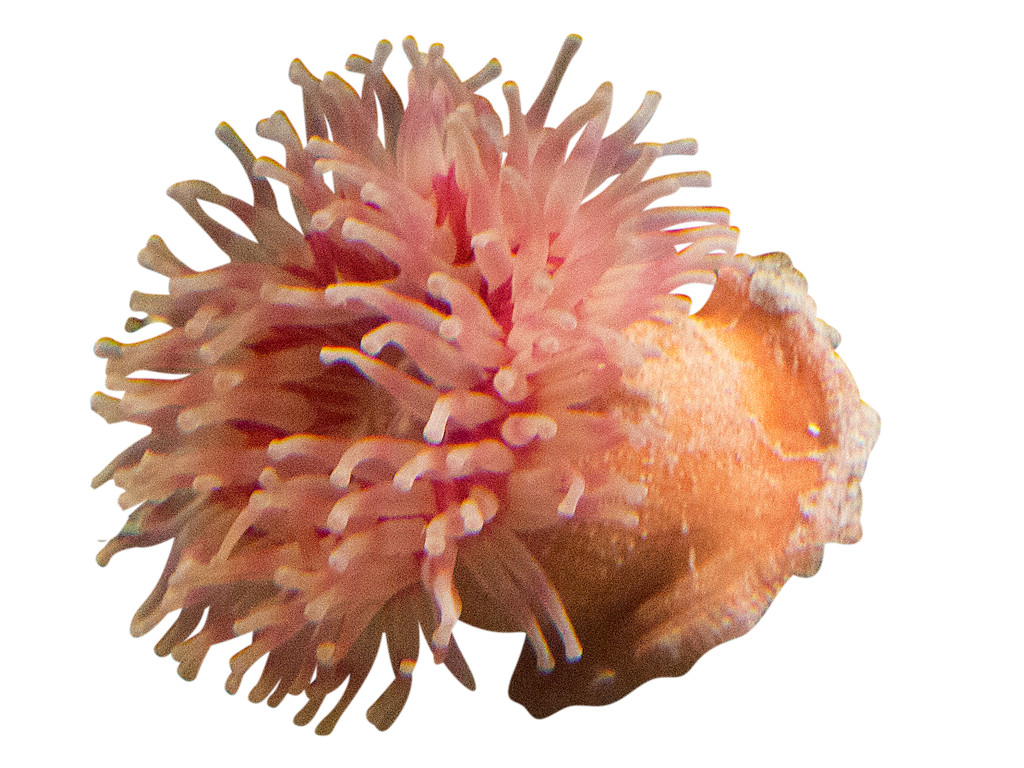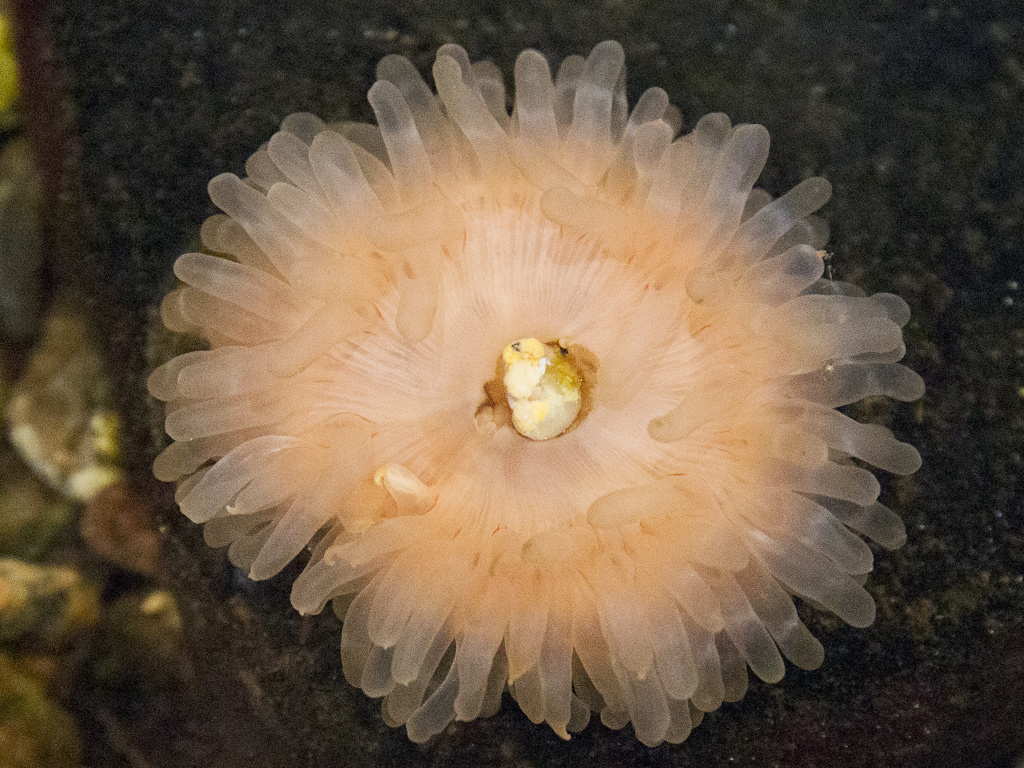Dahlia anemone
Urticina felina

Dresses in sand and gravel
The dahlia anemone is a species that lives in Swedish waters. It thrives on rocky bottoms down to a depth of about 100 metres. The dahlia anemone has many different colours, and around its feet it often wraps itself in small gravel and crushed shells for protection. Sea anemones may look like plants or mushrooms, but they are an order of aquatic animals within the group of cnidarians. The cnidarians also include relatives of the anemone, such as corals and jellyfish.

Photo: Jorg-Hempel-CC-BY-NC-SA
Stinging nettle cells
Anemones are shaped like something known as a polyp. They have a cylinder (tube) shape, consisting of a body, a foot, and a crown with tentacles. In the body there is a cavity, like a sack, which acts as the stomach of the anemone. An opening which serves as both mouth and anus leads to the stomach. The many tentacles of the anemone move back and forth in the water. The tentacles are covered with burning nettle cells that protect against predators, and paralyse and capture prey such as shrimps and plankton. The tentacles are used to move food to the mouth. The dahlia anemone uses its tentacles to catch small fish and crustaceans.

Photo: Johanna-Rylander-Malmö-Museums.
Distribution in Sweden
The West Coast and down to Öresund.
White marking = Distribution

Threat based on the Red List

Trade regulations
CITES: Not listed.